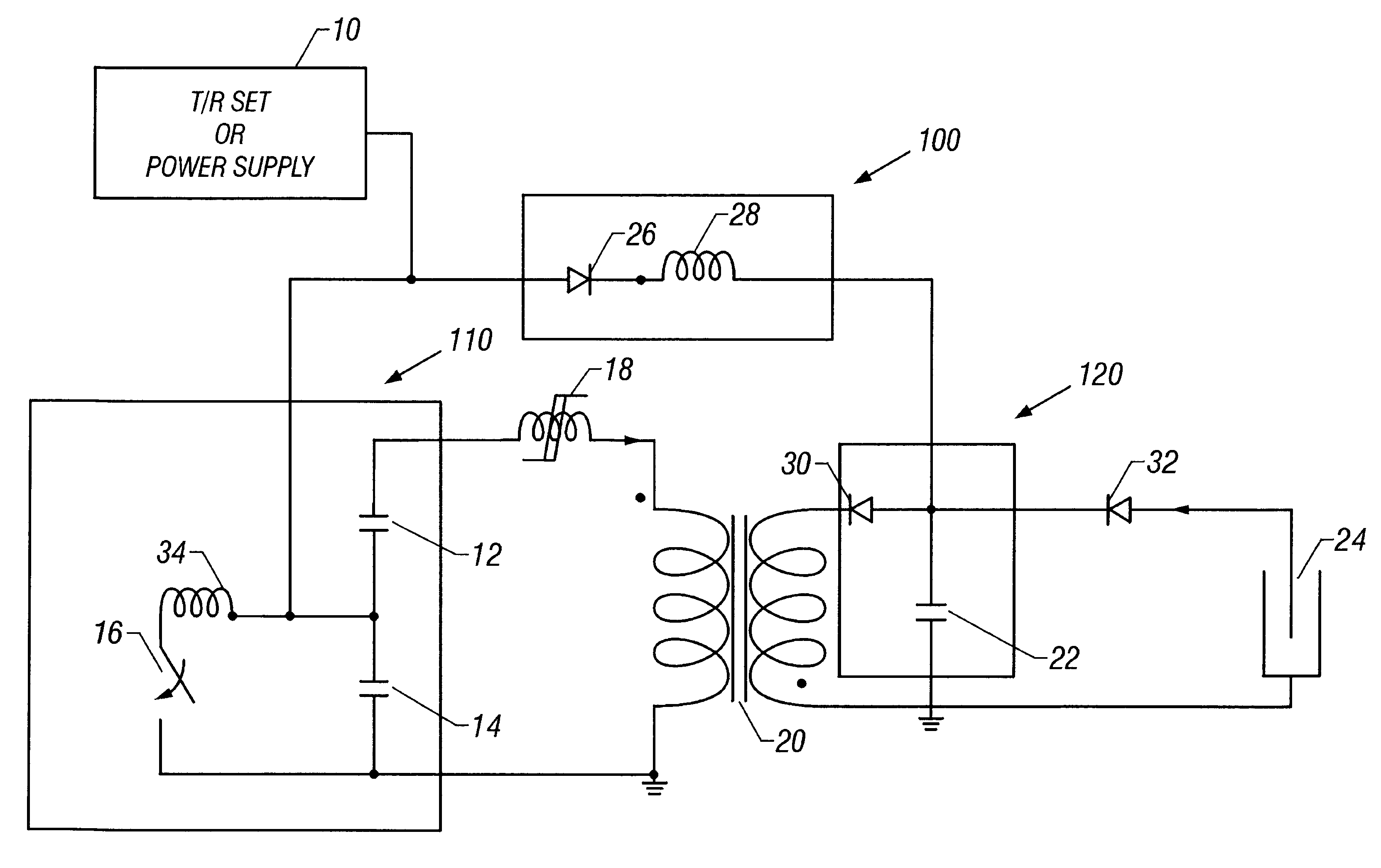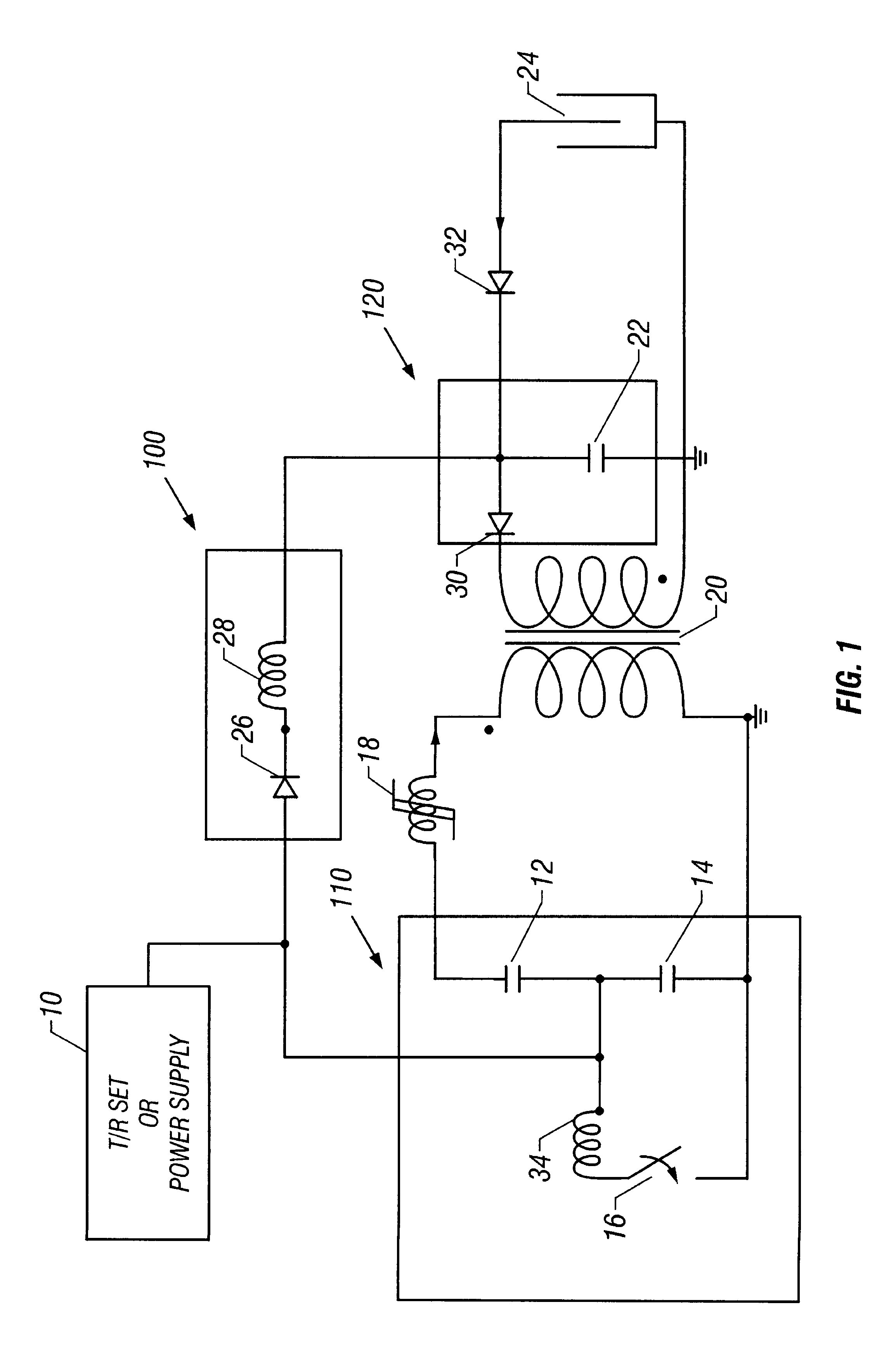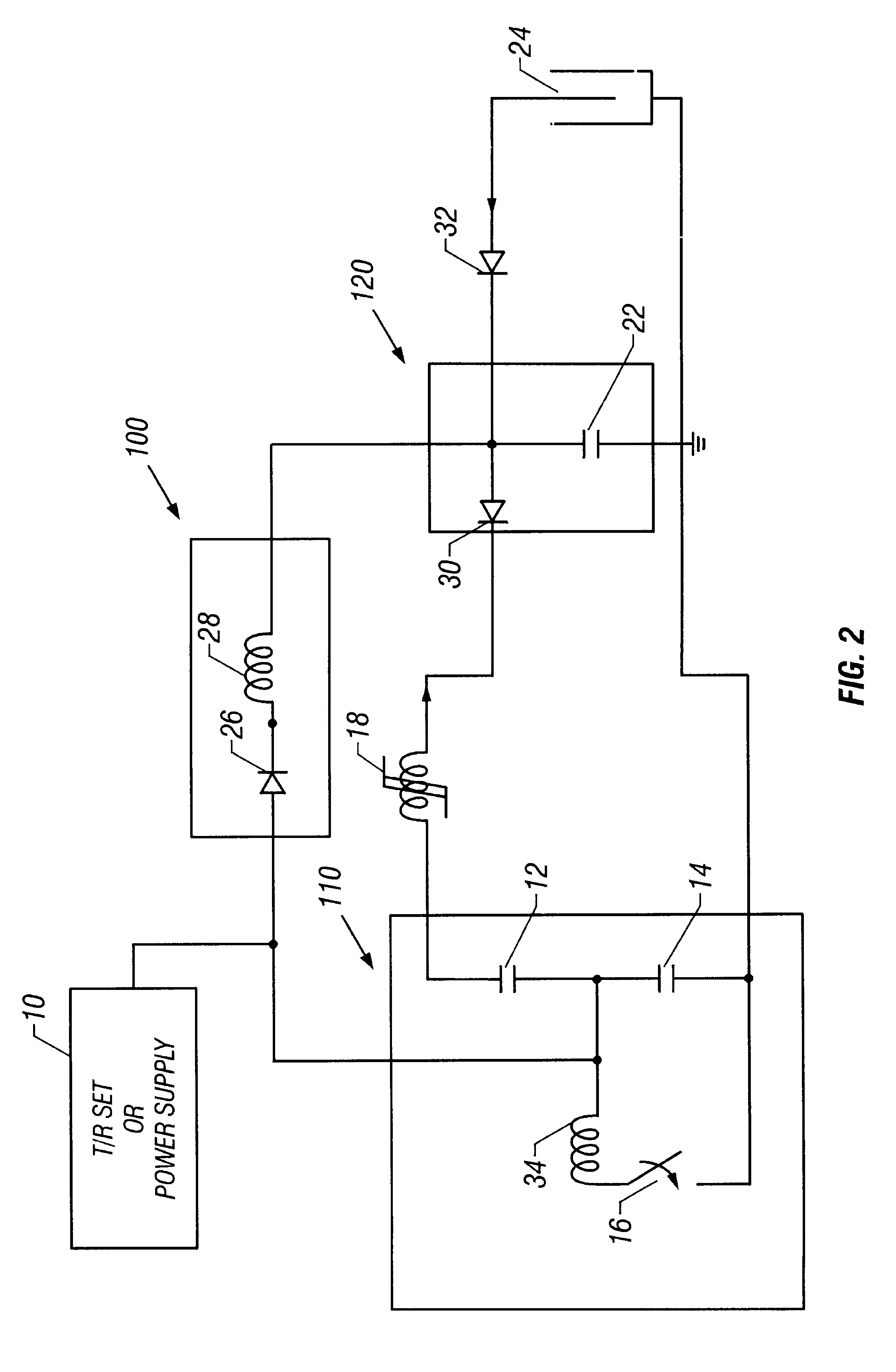Electrostatic precipitator slow pulse generating circuit
a technology of electrostatic precipitator and slow pulse, which is applied in the direction of electric supply techniques, instruments, process and machine control, etc., can solve the problems of limited success
- Summary
- Abstract
- Description
- Claims
- Application Information
AI Technical Summary
Benefits of technology
Problems solved by technology
Method used
Image
Examples
first embodiment
Attention is now turned to the figures. The first embodiment is shown in FIG. 1. This embodiment allows for the larger capacitance to be switched to load 24 where it can maintain an average electric field. The means for charging the means for producing pulsed voltage can be either existing T / R sets, or a power supply, 10 at a rate between 10 Hz and 10 kHz. Other charging means can also be used in each embodiment.
The means for producing pulsed voltage in this embodiment is an inversion circuit. Many types of inversion circuits could be used in this and other embodiments, and would be apparent to those skilled in the art. In this embodiment, circuit operation is as follows. First, inversion circuit first primary storage capacitor 12 and inversion circuit second primary storage capacitor 14 are charged to a preset voltage. Once storage capacitors 12 and 14 have been charged, primary switch 16 is triggered and closes. When switch 16 closes, the voltage on second storage capacitor 14 rev...
second embodiment
In a second embodiment, the present invention is used without transformer 20 (shown in FIG. 1) as shown in FIG. 2. In this embodiment, the circuit operates as follows. First, inversion circuit first primary storage capacitor 12 and inversion circuit second primary storage capacitor 14 are charged to one-half the desired load voltage. Once capacitors 12 and 14 have been charged, primary switch 16 is triggered and closes. When switch 16 closes, the voltage on second primary storage capacitor 14 reverses and the voltage on first magnetic switch 18 is doubled and first magnetic switch 18 saturates. When magnetic switch 18 saturates, the energy from capacitors 12 and 14 is transferred to load matching capacitor 22. Capacitor 22 is charged along with load 24. The voltage at this point is between 20 kV and 100 kV. Any unused energy that does not get utilized by load 24 is transferred back to inversion circuit primary storage capacitors 12 and 14 through energy recovery circuitry 100 made u...
third embodiment
In the present invention, an alternative energy recovery circuit is used as shown in FIG. 3 at 100 and 102. This energy recovery circuit allows for larger capacitance to be switched to load 24 where it can maintain an average electric field. As in previous embodiments, the system can be charged with existing T / R sets, or a power supply, 10 at a rate between 10 Hz and 10 kHz. Energy recovery storage capacitor 38 is used on the output of T / R set (or power supply) 10 with a series charge element 40 which can be either a series charge resistor or an inductor.
Circuit operation is as follows. First, inversion circuit first primary storage capacitor 12 and inversion circuit second primary storage capacitor 14 are charged to a preset voltage. Once primary storage capacitors 12 and 14 have been charged, primary switch 16 is triggered and closes. When primary switch 16 closes, the voltage on second primary storage capacitor 14 reverses and the voltage on first magnetic switch 18 is doubled, a...
PUM
 Login to View More
Login to View More Abstract
Description
Claims
Application Information
 Login to View More
Login to View More - R&D
- Intellectual Property
- Life Sciences
- Materials
- Tech Scout
- Unparalleled Data Quality
- Higher Quality Content
- 60% Fewer Hallucinations
Browse by: Latest US Patents, China's latest patents, Technical Efficacy Thesaurus, Application Domain, Technology Topic, Popular Technical Reports.
© 2025 PatSnap. All rights reserved.Legal|Privacy policy|Modern Slavery Act Transparency Statement|Sitemap|About US| Contact US: help@patsnap.com



